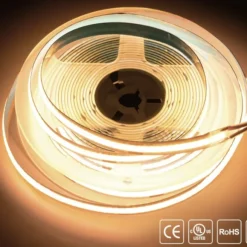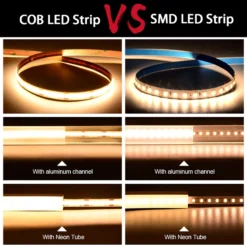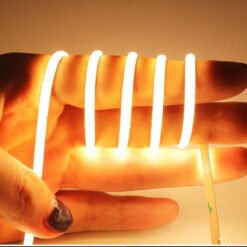Lighting plays a crucial role in enhancing the ambiance and functionality of any space. Whether you're looking to illuminate your home, office, or outdoor area, LED light strips are an efficient and versatile solution. LED lights are known for their flexibility, energy efficiency, and wide range of applications. From accentuating architectural features to creating mood lighting in living spaces, these strips offer endless possibilities. In this guide, we’ll cover everything you need to know about LED light strips, including how to choose the right one and how to install them, ensuring you get the most out of your lighting setup.
How to Choose the Right LED Light Strips?
Choosing the right LED light strips for your project can seem overwhelming, especially with so many options available. The key is to consider your specific needs and the environment where the strips will be installed. If you’re planning to use
LED light strips in a room or on a ceiling, pay attention to the color temperature and brightness levels. For a cozy, warm atmosphere in a bedroom, a lower color temperature around 2700K–3000K works best. On the other hand, a workspace or kitchen might benefit from a cooler light (4000K–5000K) for better visibility.
For outdoor settings, you need to ensure that the
LED light strip outdoor models are
waterproof and durable enough to withstand various weather conditions. Look for
LED light strip waterproof options with an IP65 or higher rating, especially if they’ll be exposed to rain or moisture. These strips are perfect for illuminating patios, garden paths, or balconies. If you’re lighting up larger outdoor spaces like gardens or outdoor kitchens, consider using
outdoor LED light strips that are designed to handle harsher environments and larger coverage areas.
For projects requiring low-voltage solutions,
12V LED light strips are a popular choice. These are ideal for automotive use, RVs, or for creating custom lighting in areas where standard power may not be readily available. Keep in mind that 12V light strips typically need a compatible power supply or transformer.
How to Install LED Light Strips?
Installing LED light strips is a straightforward process that most people can do themselves with minimal tools. However, it’s important to plan the installation carefully to avoid issues later on. Start by determining where you want the
LED light strips on the ceiling or in other areas of the room. Clean the surface thoroughly to ensure the adhesive backing on the strips will stick properly. Some LED light strips come with mounting clips for added stability, which is especially useful for long or heavy strips.
For outdoor installations, make sure the
LED light strip outdoor is appropriately secured and protected from the elements. Depending on the location, you may want to use additional waterproofing measures to enhance longevity. Using
waterproof LED light strips ensures they will perform optimally, even in damp conditions. Be sure to also secure any exposed connections with waterproof sealants or enclosures to prevent damage.
If you’re installing
12V LED light strips, ensure you have the correct power supply. Many
12V LED light strips come with connectors that make it easy to plug into a power source, but always double-check the voltage requirements to avoid overloading the strip.
Step-by-Step Installation Tips:
- Measure the area where you plan to install the light strip to ensure you have the right length.
- Cut the LED strip (if necessary) at the marked intervals, usually every few inches, to fit your space perfectly.
- Connect the power supply to the strip, ensuring the voltage matches the strip’s requirements.
- Peel off the adhesive backing and carefully apply the strip to the surface.
- For ceiling installations, consider using additional mounting hardware for extra support, especially for longer runs.
- Test the lighting system to ensure everything is working before finalizing the installation.
Benefits of Using LED Light Strips
One of the major advantages of
LED light strips is their energy efficiency. Compared to traditional incandescent bulbs, LEDs use significantly less electricity while providing the same, if not better, illumination. This makes them an ideal choice for those looking to reduce energy costs without compromising on lighting quality. Whether used indoors in a living room or outdoors on a patio,
LED light strips offer long-lasting and cost-effective lighting solutions.
LED strips are also highly customizable. You can choose from a variety of colors, brightness levels, and lengths to fit your specific needs.
LED light strips in rooms create unique lighting designs that can highlight architectural details, furniture, or artwork. Meanwhile,
outdoor LED light strips can be used to create dramatic effects in gardens, around pools, or along walkways.
Moreover, the flexibility of these strips allows for easy installation around corners or curved surfaces. This means you can creatively install them along ceilings, under cabinets, or even outdoors without worrying about breaking the strip or losing light quality.
Conclusion
Whether you're looking for the perfect
LED light strip in a room or a durable
outdoor LED light strip, the options are endless. By considering factors like color temperature, waterproofing, and voltage, you can choose the ideal lighting solution for your space. Follow the installation tips for a hassle-free process and enjoy the benefits of energy-efficient, long-lasting, and customizable lighting that can transform any environment into a beautifully lit space.



